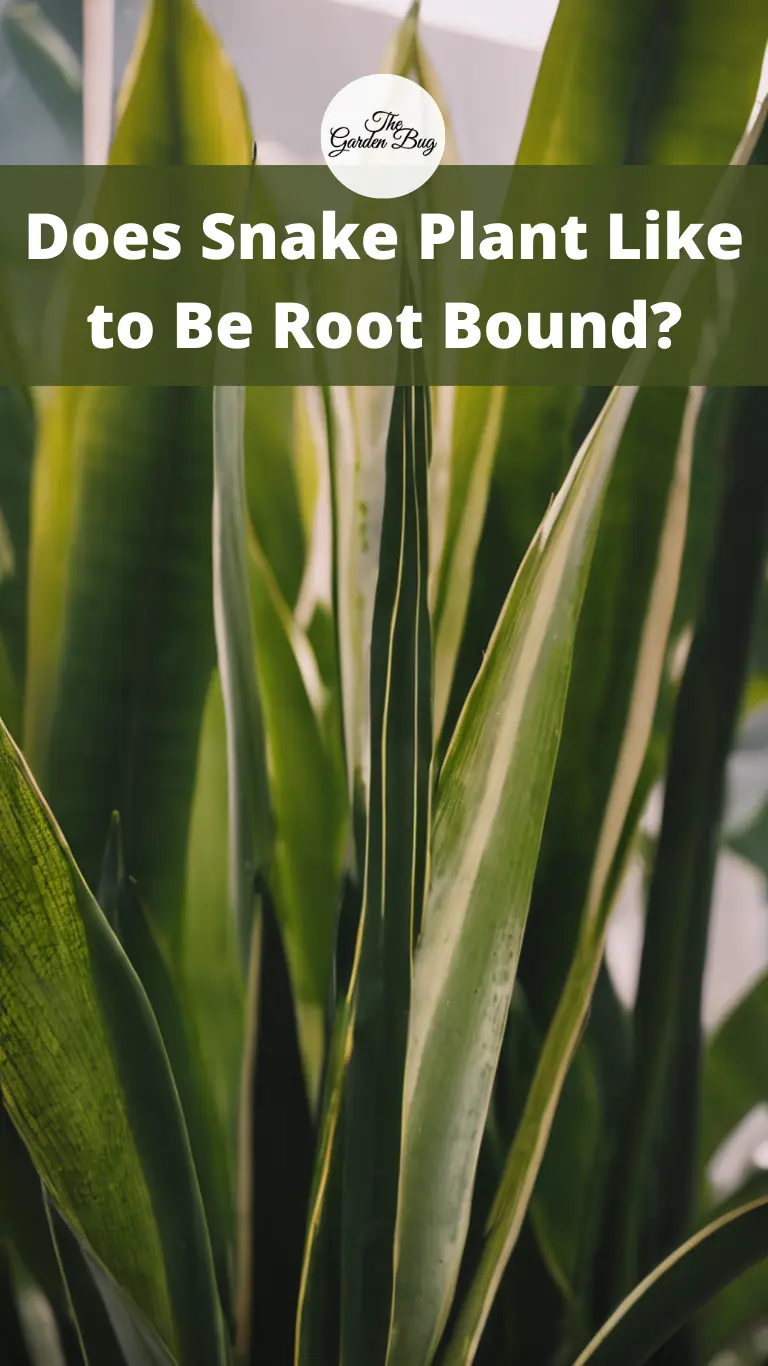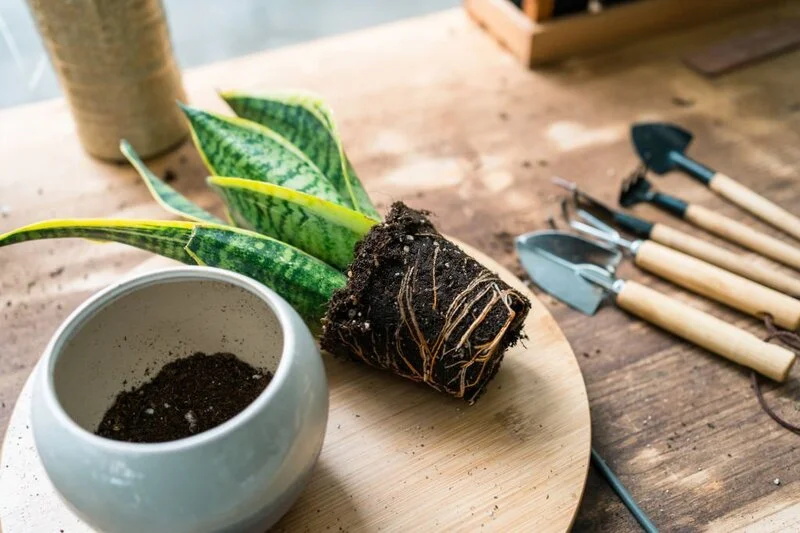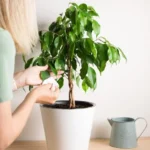Today, we’re going to talk about a very resilient and easy-to-care-for houseplant – the snake plant. You might know it by its other names, mother-in-law’s tongue or Sansevieria. These striking, tall plants are a favorite for many indoor gardeners due to their minimal care requirements and ability to withstand various environmental conditions. But one question often comes up about these hardy plants: do they like being root-bound? Let’s dig deeper to find the answer!
- SUPERIOR WATER MANAGEMENT- Quickly drain away excess moisture after each watering to protect roots and grow a happy plant
- PERFECT FOR ALL SNAKE PLANT TYPES- Specially blended substrate for all snake plants such as Sansevieria trifasciata, Laurentii, Black Coral, and Cylindrica
- ALL-NATURAL INGREDIENTS- Made from all-natural horticultural materials such as coconut coir, pine bark chips, perlite, and sand for added drainage; contains no slow release fertilizer
- PROFESSIONALLY MIXED IN THE USA- Each bag of snake plant soil is packaged with love on our family farm right in the USA; perfect for potted and outdoor snake plants
- REPOTTING MADE SIMPLE- Available in heavy-duty, resealable bags in 4 or 8 quart sizes; perfect for any size houseplant garden
Root Bound Plants
First things first, what does it mean for a plant to be ‘root bound’? Picture this: you’ve got a plant in a pot, and it’s been living there happily for quite a while. But as it grows, its roots start to run out of room. Eventually, they begin to form a tight circle around the inside of the pot. This, my green-thumbed friends, is a plant becoming ‘root bound’.
For many types of plants, this can cause serious problems. The plant might stop growing, leaves could yellow or drop off, and in extreme cases, the plant might even die. But then there are some plants, like our friend the snake plant, that seem to actually enjoy this tight squeeze. So, what’s the deal with that? Let’s find out.
Snake Plants and Their Root System
Snake plants are unique and, dare we say, quite ‘unfussy’ in their growing habits. They have robust, thick roots that are designed to store water – a handy adaptation from their native environments in West Africa. This makes them incredibly drought-tolerant and gives them the ability to thrive even in cramped conditions. In fact, a tight fit can often make a snake plant feel more at home. They are known to prefer their roots a little bit constricted, as this often stimulates them to bloom.
Signs Your Snake Plant Is Root Bound
Now you might wonder, how do I know if my snake plant is root bound? Well, there are a few tell-tale signs to look out for. First, you might notice the roots are starting to sneak out of the drainage holes at the bottom of the pot or even push up the soil in the pot. Secondly, if your plant isn’t growing as much as it used to or if the growth seems stunted, that’s another hint.
Another key indicator is watering. If water runs straight through the pot without being absorbed, or if the plant dries out quickly after watering, it could mean that your snake plant is root bound. That’s because the root ball is so dense, it’s preventing water absorption.
Remember, while many plants can suffer from being root bound, snake plants seem to wear it like a badge of honor, often producing more pups and flowers when their roots are a bit snug. Let’s dive deeper into how to handle a root-bound snake plant in the next section.
To Repot or Not to Repot: Making the Decision
Deciding whether to repot your snake plant can be a bit tricky. Just because your snake plant is root-bound doesn’t mean it’s unhappy. But, if you start to notice a severe decrease in growth, wilting, or the soil drying out excessively fast after watering, it might be time to give your snake plant a bit more space.
If you do decide to repot, make sure to be gentle and go slow, as the roots can be sensitive to change. When choosing a new pot, don’t go too big. A pot that’s just a couple of inches larger in diameter than the old one should be perfect.
- ✔ SIZE: plant stand height is 16″, inner diameter 10″, suitable for round planter which outer diameter under 10 inch. *THE PLANT POT IS NOT INCLUDING.*
- ✔ SIMPLE STYLE MODERN DESIGN: Elegant house floor planter stand reflects minimalist which inspired by classic mid-century style. Well fits to most home decor and furnitures, can be paired with a variety of plants, such as fiddle leaf fig tree, cactus, snake plants, and more.
- ✔ MATERIAL: Metal with powder coated, as a floor protectors, there are black stoppers on the top and bottom of the legs. An elegant blend of vitality and modern style, offering a relaxed feel to your family and guests with its blooming greenery.
- ✔ FUNCTIONAL AND PRACTICAL: sturdy and well-built, with an emphasis on functionality, easy to put together and take apart. Simply stand it up and insert the crossbar in the notch, then tighten the screw. keep plants from falling or being knocked over by kids or pets.
- ✔ USING PLACE: Put it in your house or corner, patio, garden and office, will create an intriguing natural focal point in your place. Mkono is a registered trademark and our product is professional manufacturing and sole selling.
Caring for a Root-Bound Snake Plant
If your snake plant is root-bound but still seems happy, it’s perfectly okay to let it be. However, you might need to water it a little more frequently, as root-bound plants tend to dry out faster. On the flip side, be careful not to overwater. Snake plants are prone to root rot if they sit in too much water.
Also, even if your snake plant enjoys being root-bound, it might still appreciate a bit of fertilizer now and then. A slow-release fertilizer applied during the growing season can keep your snake plant healthy and thriving.
- 🌱 PERFECT BLEND OF NUTRIENTS – Give your snake plants everything they need to grow up healthy! Our 3-1-2 liquid concentrate has all of the essential nutrients that your plants crave.
- 🌱 MIX WITH WATER – Designed to blend with water to provide a single application to use every other watering cycle. 1-2 tsp per 8 cups water.
- 🌱 SUITABLE FOR ALL VARIETIES – You can use our fertilizer on just about any kind of snake plants. It’s great for seedlings and mature plants alike.
- 🌱 SPECIALLY DESIGNED PREMIUM FORMULA – Special blend enables maximum absorption for plant growth and vitality.
- 🌱 DURABLE PACKAGING – This liquid concentrate comes in a sturdy, 8 oz foil sealed bottle. Store it in a safe, dry place and you can count on it to stay in great condition for a long time to come.
Conclusion
So, there you have it, folks! In the world of snake plants, being root-bound isn’t necessarily a bad thing. It might even be just the way your plant likes it! As always, the key to a happy plant is observing and understanding its specific needs.







